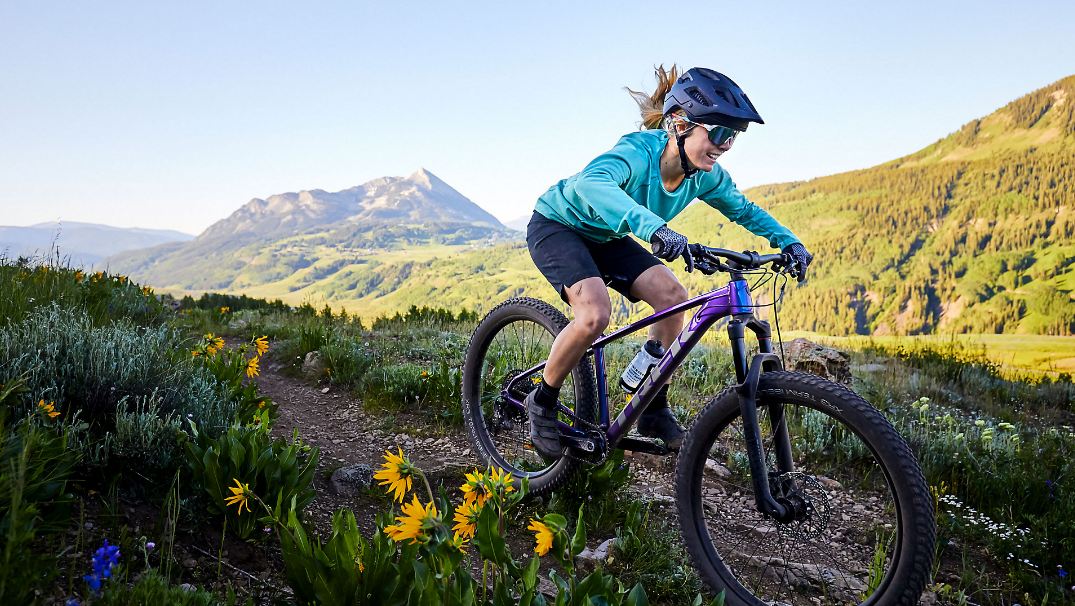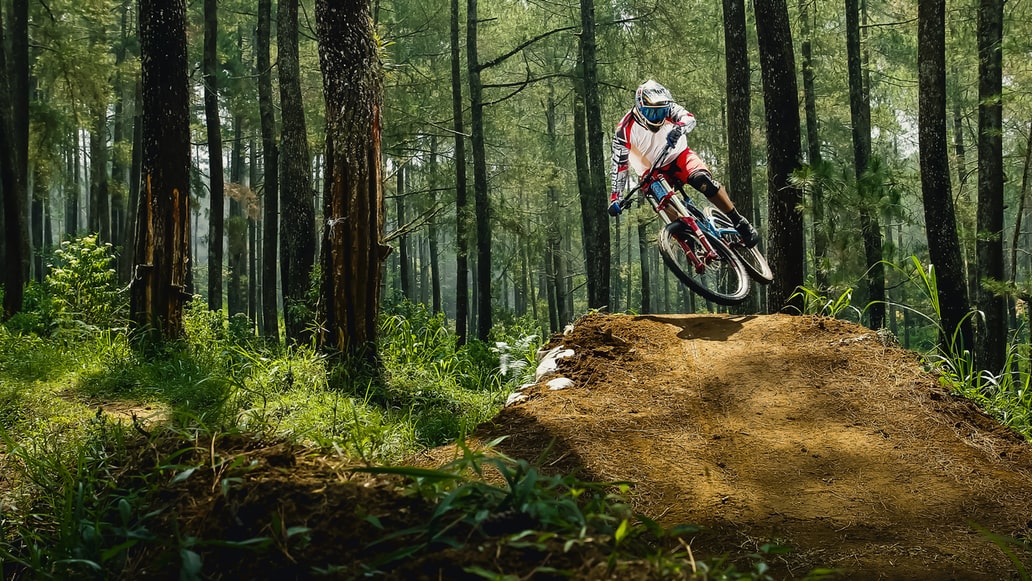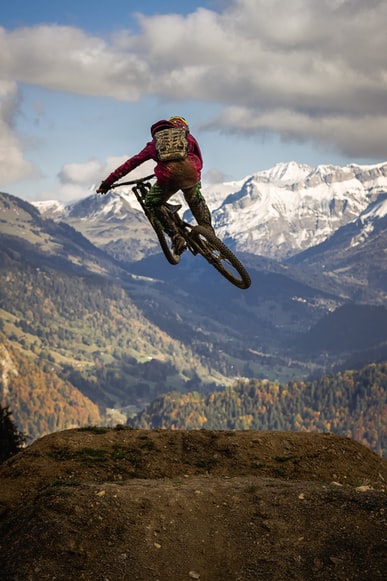You’ve heard a lot about mountain biking and its advantages, such as health, friendships, and the chance to get out into the woods, but you’ve never found a way to try it out. In only a few hours, you may learn everything there is to know about the sport and the bike from pros.
You can handle all kinds of terrain when mountain riding and enjoy every moment.
Mountain biking entails riding bicycles over rough terrain; specialized mountain bikes can increase the bikes’ durability. Trails that are both fun and demanding may be found all across the United States. Cross country, downhill, urban or street, freeriding, mountain, and dirt jumping are the different mountain bike classifications. As a hobby, mountain biking provides incredible riding opportunities. Mountain biking is a popular outdoor activity these days since it helps people stay in shape while also allowing them to connect with nature and experience beautiful sights. You should bring your bicycle, helmet, and gloves with you.
Mountain Biking Details
| Category: Competition, Extreme Sports, Nature, Outdoors, Physical, Social, Sports, Traveling | Time: 2+ hrs | Skill: Lots |
| Initial Cost: $$$$ (500+) | Space: some | People: small |
| Long-Term Cost: Medium | Makes Money: No | Location: outdoor |
Who pursues this hobby?
Are you someone who likes pushing their physical boundaries and challenging themselves by climbing a hill?
Do you like the excitement of speeding down a steep, technical downhill, navigating rocks, roots, drops, and jumps?
Or are you somewhere in the center, enjoying the uphill but looking forward to the downhill’s exhilarating flow? Do you want to be able to bike to the top of the hill and then reach that beautiful path you enjoy riding?
Which Mountain Biking Style to pick
The sort of bike you purchase will be based on the riding you want to perform. Mountain bikes, like mountain riding techniques, may be divided into three categories: those that excel at climbing, those that excel at descending, and those that excel at both. Each of these bicycle designs is distinct from the others. It’s nearly difficult to cycle uphill on a downhill bike and vice versa.
Yes, it is possible, but only with extreme fitness for riding uphill on a downhill bike or robust riding expertise for riding challenging downhill routes on a bike designed for uphill. What I’m trying to express is that there is a significant difference between motorcycles. As a result, you must select a bike that is appropriate for your riding style.
Benefits of Mountain Biking
- Improved Heart Health – Cardiovascular fitness is known to increase with regular exercise. The British Medical Association investigated 10,000 adults and discovered that cycling for at least 20 kilometers a week reduced the risk of coronary heart disease by nearly half.
- Less Stress on the Joint – Mountain biking is a low-impact sport, making it easier on the joints than other aerobic activities like running. Cycling is also a non-load-bearing sport, which means the act of sitting relieves strain on your joints and lowers your chance of injury.
- Decreased Risk of Diseases – Moderate exercise regularly is proven to boost your immune system and keep you healthy.
- Reduced Stress and Improved Mood – Exercise also increases serotonin, a brain chemical that aids in the prevention of sadness and anxiety.
- Increased Brain Powe – According to Illinois University researchers, cycling improved cardio-respiratory fitness by 5%, which resulted in a 15% increase in mental assessments. This is partly due to the formation of new brain cells in the hippocampus, the memory-related brain area.
- Improved Balance and Coordination – Compared to slogging on a treadmill or stair-stepper, Mountain riding is a dynamic exercise that needs the rider to react to changing terrain, pitch, and height regularly. On a mountain bike, staying stable and secure not only protects you from falling but also builds brain connections and reinforces muscle memory.
- Whole Body Workout – You’ll undoubtedly notice a cyclist’s well-defined calf muscles, but you may not know that mountain riding engages all of your muscles. Cycling, of course, strengthens your legs, thighs, and calves while also assisting in the development of a lovely tight butt.
- Sleep Better – After a ride, you may feel weary and worn out right away, but it will eventually lead to more restorative sleep when you need it at night. Riding helps us sleep better by lowering cortisol, a hormone that keeps us up. Mountain biking is an outdoor sport that exposes you to daylight, which helps to preserve the body’s normal circadian sleep/wake cycle while also increasing vitamin D production.
- Social Benefits – Happiness psychology, a newer area, has discovered that good relationships and social interactions are essential for happiness and purpose in life. Mountain biking is a popular social sport for organizations and individuals that come together to ride.
- Enjoy the Nature – More than any other sport, mountain biking allows you to rapidly go off the main road and experience the serenity and grandeur of nature.
Basic Skills
- Braking – On flat ground, use the front brakes; on a downward slope, use the back brakes often. On steep climbs, using the rear brakes keeps you from tumbling over.
- Changing Gears – Switching gears takes careful preparation. You must maintain pedaling while shifting so that the chain moves and adapts to the proper equipment.
- Pedal Properly – It is critical to cycle properly because training effective pedaling minimizes muscular tension and increases riding abilities.
- Turn Corners – Stop pedaling and center yourself on the road and in the bends. Maintain a low outside foot and a high inner foot while keeping your bike straight and accelerating.
- Wheels and tires – Mountain bike wheels are rugged and have a large number of spokes. They are less maneuverable and roll readily over obstructions. The tires’ treads vary depending on the weather and terrain, but they are all capable of quickly shedding dirt and mud.
- Brakes – Mountain bikes, like road cycles, have cantilever brakes, but many riders prefer the extra force of hydraulic brakes since they are more successful at stopping on rough terrain.
- Rear suspension – Mountain bikes are more robust and lighter than road cycles, making them popular among racers.
- Gears take many bags to cycle uphill, across rugged terrain, and through dirt and sand. Riders must be able to shift gears effortlessly from the handlebar grips to ride on rough terrain.
- Pedals – Clip pedals are used to secure shoes.
Cost of Mountain Biking as a Hobby?
For most individuals, mountain biking has a hefty initial cost of entry. The expense of ongoing maintenance or upgrades is primarily determined by how often you ride and crashing on rugged trails. It’s not unusual to spend $2500 for an excellent complete suspension mountain bike and some essential gear.
Conclusion
Cycling is a process that takes time, especially for novices. Cycling becomes second nature to your body as time passes and you continue to work out. You may start with short, simple rides and progressively increase the distance to build stamina, strength, and ability while avoiding injuries.


